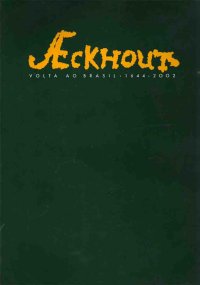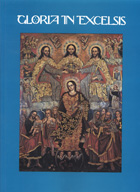 Albert Eckhout returns to Brazil/Albert Eckhout volta ao Brasil, 1644-2002 by
Albert Eckhout returns to Brazil/Albert Eckhout volta ao Brasil, 1644-2002 by  Aleijadinho e seu tempo: fé, engenho e arte by
Aleijadinho e seu tempo: fé, engenho e arte by  O Aleijadinho e sua oficina: catálogo das esculturas devocionais by
O Aleijadinho e sua oficina: catálogo das esculturas devocionais by  Americas: the decorative arts in Latin America in the era of the Revolution by
Americas: the decorative arts in Latin America in the era of the Revolution by  The Art of Painting in Colonial Quito by
The Art of Painting in Colonial Quito by  El Barroco y la seducción de la talavera poblana by
El Barroco y la seducción de la talavera poblana by  Gloria in excelsis: the Virgin and angels in viceregal painting of Peru and Bolivia by
Gloria in excelsis: the Virgin and angels in viceregal painting of Peru and Bolivia by In 1789 don Ignacio Mazihcatzin, the Indian pastor of Yehualtepec, commissioned noted regional artist José Manuel Yllanes to do a set of oil paintings for his parish church. As a formal record of inquiry and approval between don Ignacio and the bishop of Puebla, the document includes depositions about the prospective paintings and watercolor sketches of them. From this material, art historian Cuadriello reconstructs both mythic and historic events in Tlaxcala's collective memory, providing an extensively contextualized study of art, society, religion, and history in eighteenth-century New Spain.
In its broad scope, the book reaches far beyond a mere deciphering of the symbolism of iconic images to provide a new social history of art for colonial Mexico. It will appeal to art historians, historians of colonial Latin America, and scholars interested in how indigenous communities took the initiative, through a mythic and prophetic discourse, to negotiate and claim their own place within New Spain.
 Images of the Natives in the Art of New Spain by
Images of the Natives in the Art of New Spain by Reacting to the rising numbers of mixed-blood (Spanish-Indian-Black African) people in its New Spain colony, the eighteenth-century Bourbon government of Spain attempted to categorize and control its colonial subjects through increasing social regulation of their bodies and the spaces they inhabited. The discourse ofcalidad(status) andraza(lineage) on which the regulations were based also found expression in the visual culture of New Spain, particularly in the unique genre ofcastapaintings, which purported to portray discrete categories of mixed-blood plebeians.
 New World Orders: Casta Painting and Colonial Latin America by
New World Orders: Casta Painting and Colonial Latin America by  The Paradise Garden Murals of Malinalco by
The Paradise Garden Murals of Malinalco by  Splendors of the New World: Spanish Colonial masterworks from the Viceroyalty of Peru by
Splendors of the New World: Spanish Colonial masterworks from the Viceroyalty of Peru by